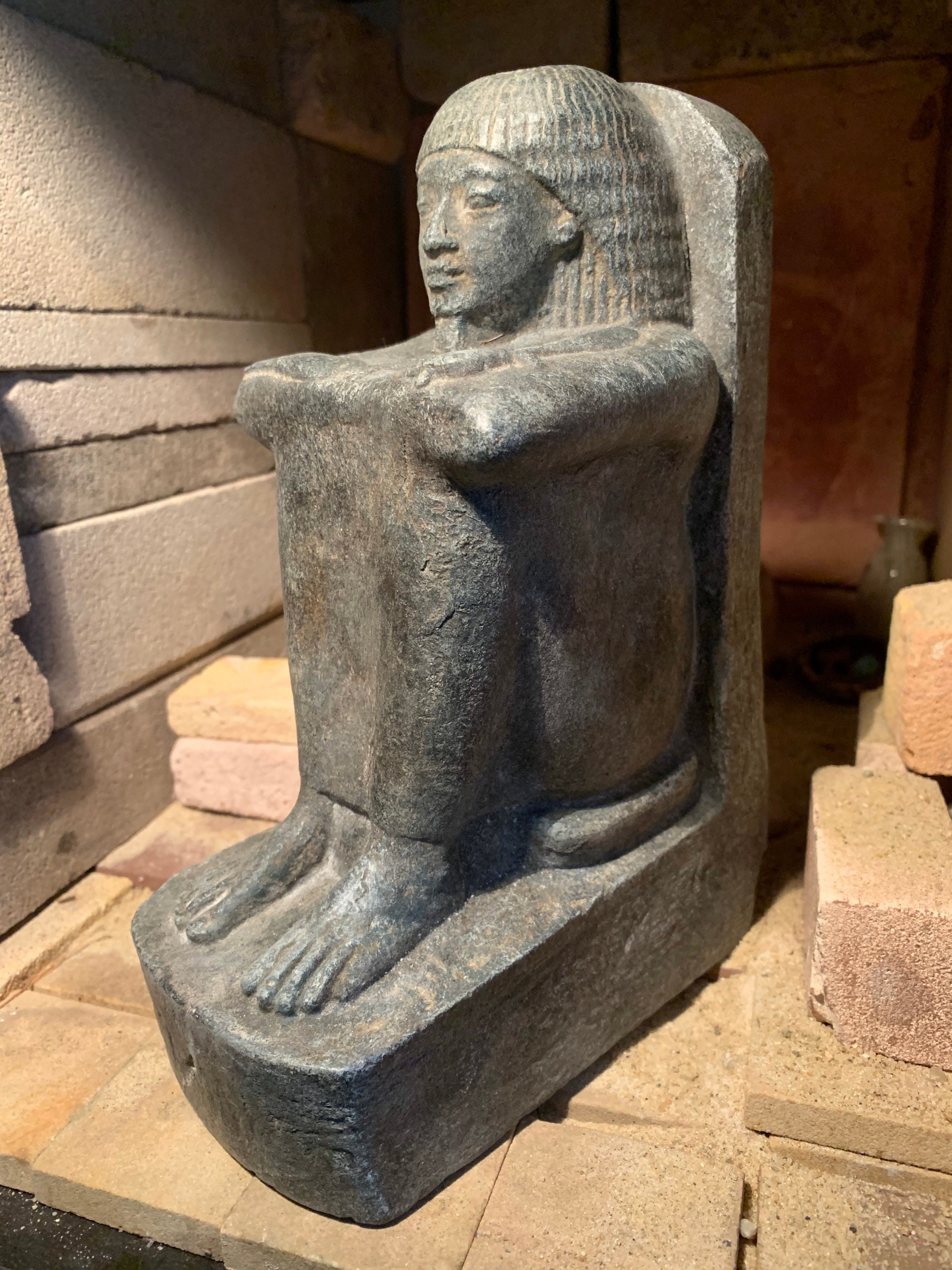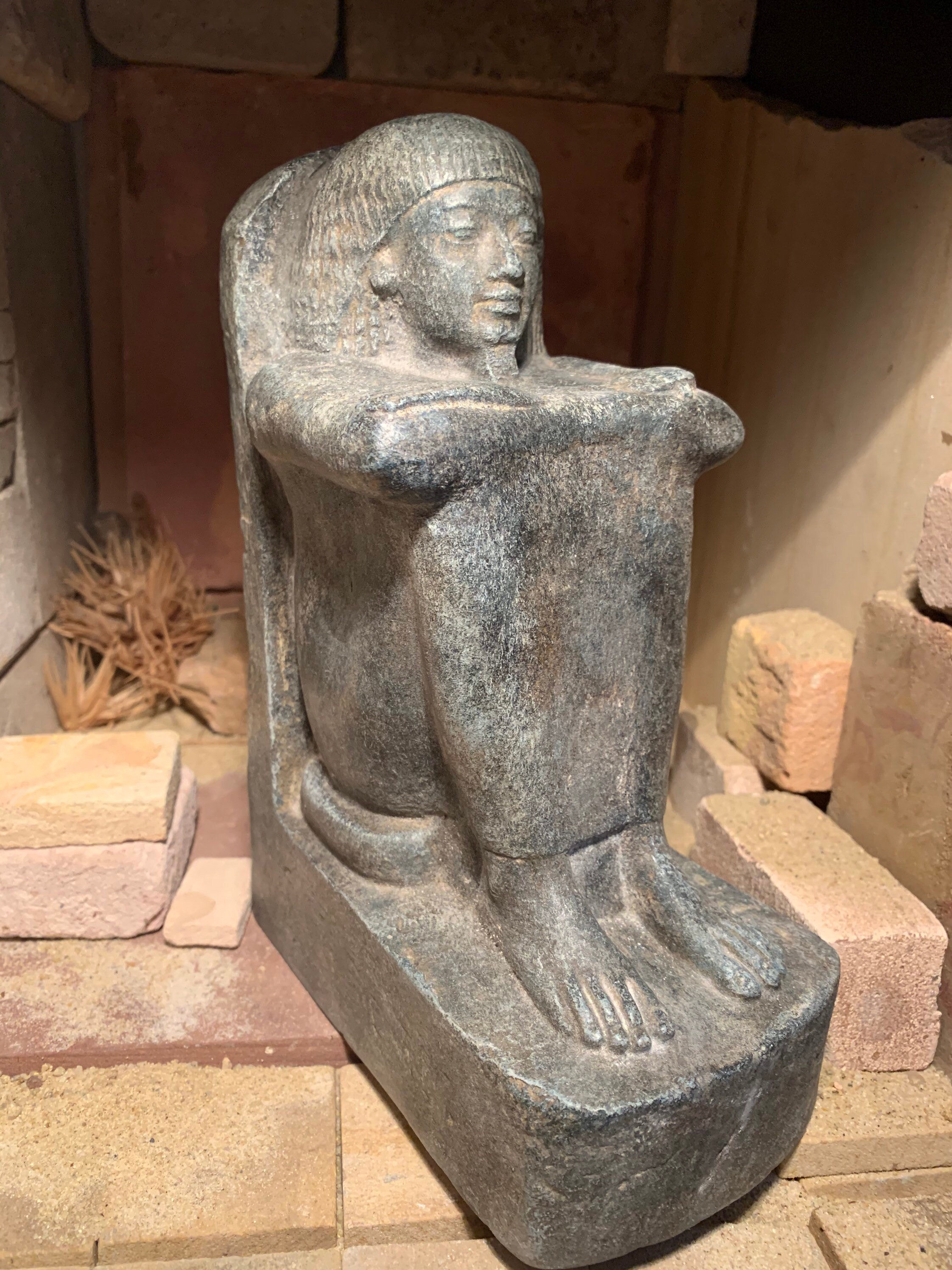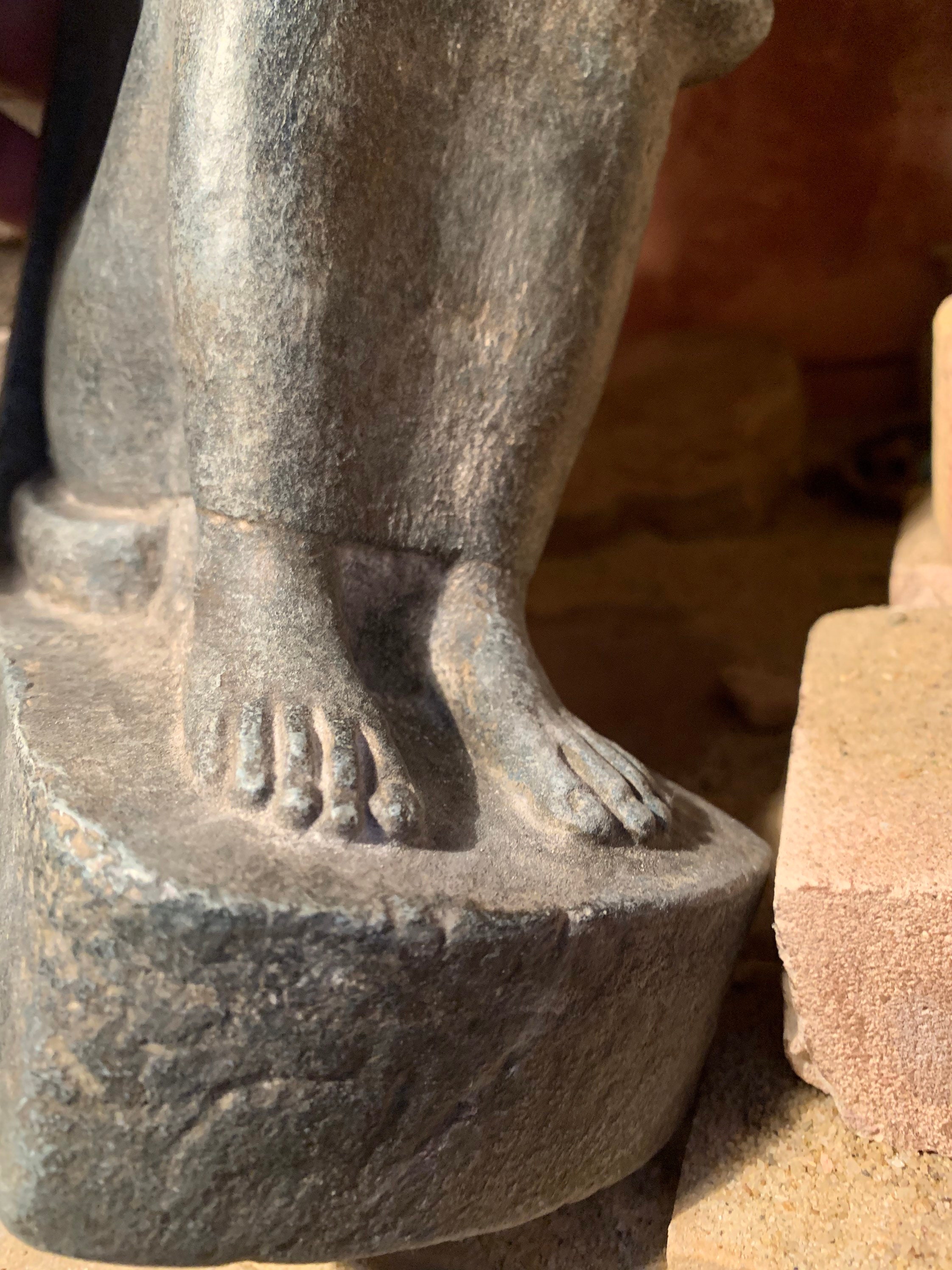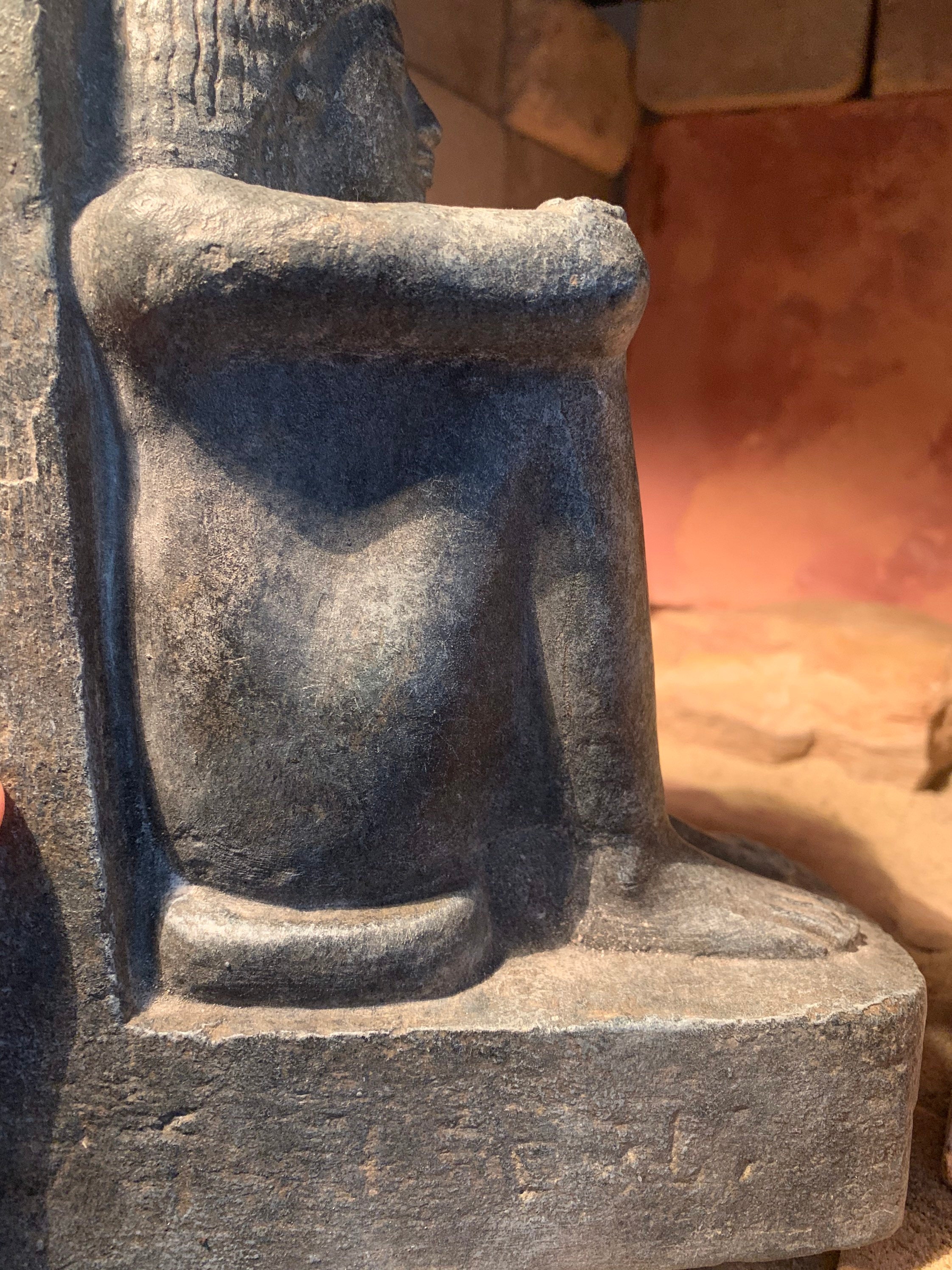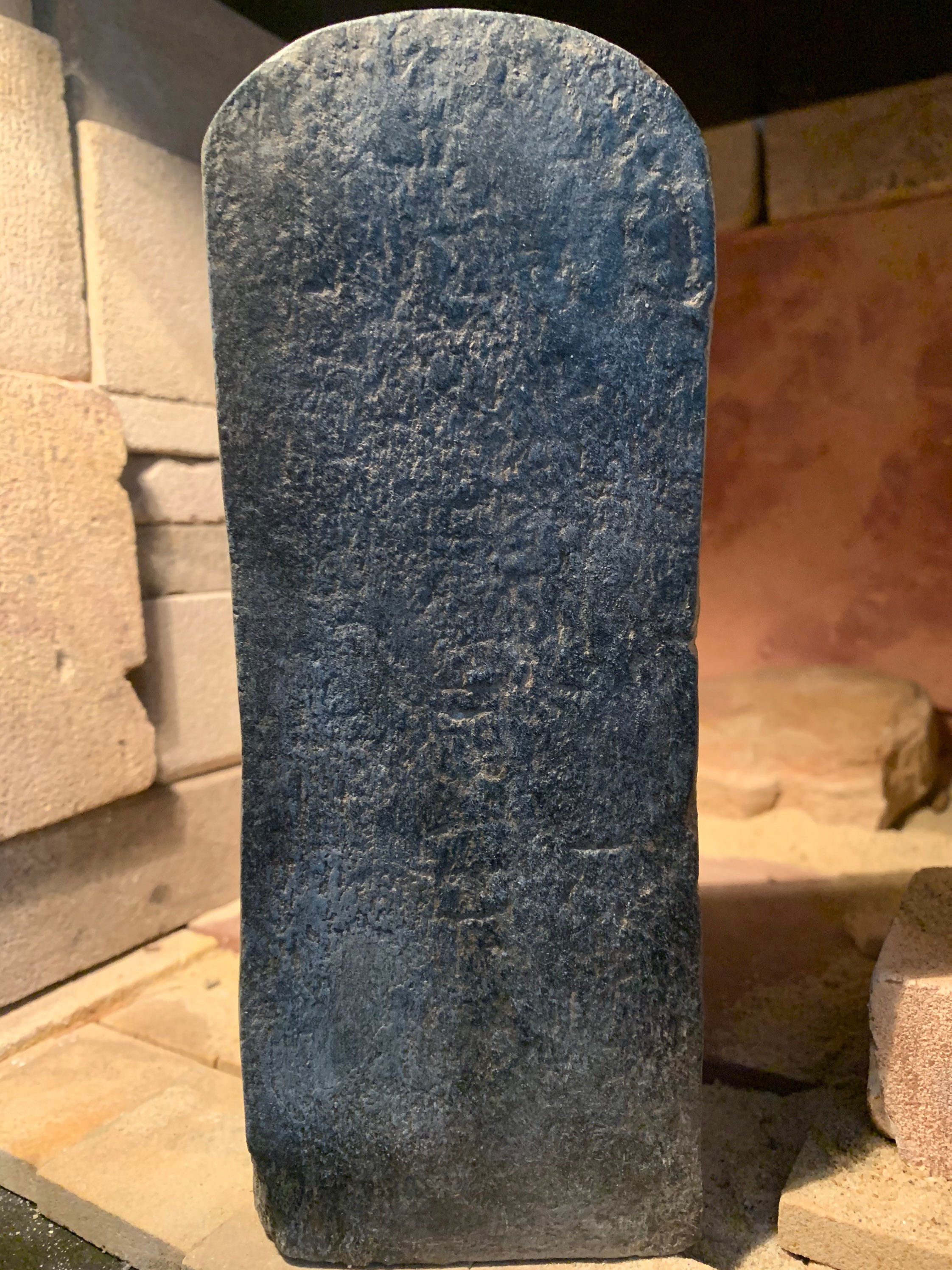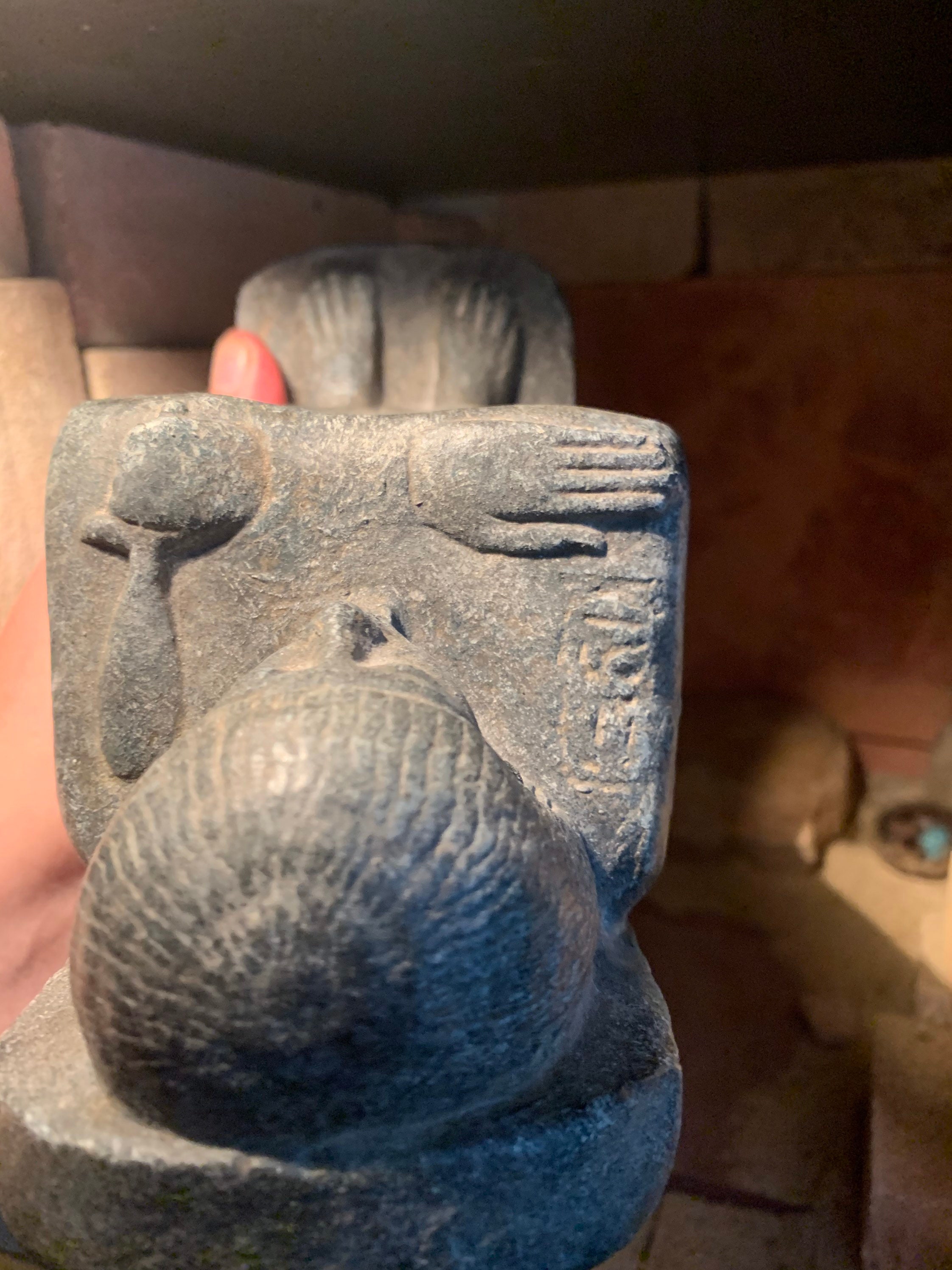Egyptian block statue - museum replica sculpture. Reign of Horemheb
Egyptian block statue
Reign of Horemheb - 18th dynasty
approximately 1319 -1292 B.C.
Dimensions :-
Total height - 21.5 cm / 8-1/2 inches
Width - 8.2 cm / 3-1/4 inches
Depth - 15.1 cm / 6 inches
On offer here is a very interesting 18th dynasty Egyptian block statue replica with a shape and size very suited to being used as an elaborate bookend if you wish.
As a display statue it is a good example of post Amarna style, the fine feet and facial style suggest the reign of Horemheb. It is an intriguing piece due to the fact that remnant hieroglyphs persist where someone in ancient times has tried to erase all of the text on the back and the curved base. This was a rampant practice during Horemheb's reign and into the 19th dynasty where Amarna period statues were either destroyed or re-purposed after the heresy of Akhenaten had run it's course.
The statue seems to have been abandoned but could actually be Horemheb himself before he became Pharaoh. He was never meant to be king and his noble tomb that he had started in Memphis was also abandoned in favour of the valley of the kings. The remaining reliefs and statuary in his Memphis tomb were altered to show the royal cobra on his forehead and the use of the cartouche around his name even though he was never buried there. His wife however was interred there.
A cartouche has been carved on the right arm of this statue that has been obviously added after the erasure and is not very distinctive. Likely an attempt at the name Horemheb or even Ramses.
Made of a limestone and quartzite composition stone It has been given an aged slate black / grey patina.
Background information
Egyptian block statues, are a distinctive statue type first seen in the middle kingdom and were designed to last an eternity. Strictly non-royal they are representations of a noble class with inscriptions to be read to keep their memory alive.
The very shape of a seated human form wearing a sheath like cloak removed the worry of limbs being snapped off thus making them very popular choices. They were comparatively easier to make compared to the complexity of standing statuary but the best examples have good body contours, hands and sometimes feet. This example is particularly fine with hands holding implements and well defined feet.
Larger versions were placed in temple courtyards for the next generations of passers by to admire and read the texts concerning the individual represented. This would perpetuate the memory and allow him to live again. To even utter the name would be one step closer to immortality and often a spell would be inscribed that once recited, would ensure a spiritual offering had been made.
The hieroglyphs were easily and often abundantly carved on the flat surfaces created by the pose.
During the last phase of Egyptian empire during the Ptolemaic period, block statues were still in use and the surfaces of some examples are festooned with inscriptions covering everything except the face.
Shipping from Australia
Processing time
3-5 business days
Estimated shipping times
- North America : 1 - 3 weeks
- Europe : 1 - 3 weeks
- Australia, New Zealand and Oceania : 1 - 2 weeks
- Asia Pacific : 1 - 3 weeks
- Latin America and the Caribbean : 1 - 3 weeks
- North Africa and the Middle East : 1 - 3 weeks
- Sub-Saharan Africa : 1 - 3 weeks
I'll do my best to meet these shipping estimates, but can't guarantee them. Actual delivery time will depend on the shipping method you choose.
Customs and import taxes
Buyers are responsible for any customs and import taxes that may apply. I'm not responsible for delays due to customs.
Payment Options
Returns & Exchanges
I gladly accept returns and cancellations
Just contact me within: 5 days of delivery
Ship items back to me within: 14 days of delivery
Conditions of return
Buyers are responsible for return shipping costs. If the item is not returned in its original condition, the buyer is responsible for any loss in value.


